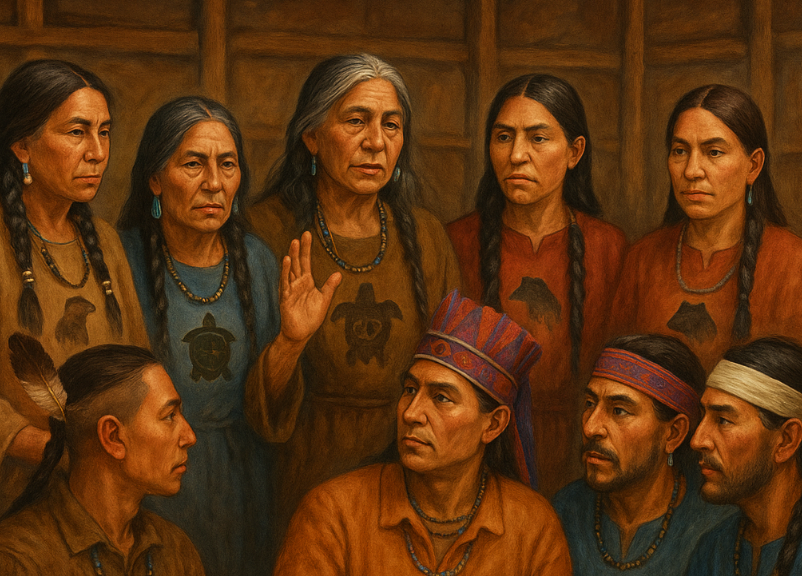
Image: Haudenosaunee Clan mothers providing guidance to male leaders, AI generated
Scratch the surface of the United States Constitution, and you will not find mere parchment and politics — you will hear an echo. A buried rhythm. The cadence of a law older than any empire on this soil. It is the Gayanashagowa — the Great Law of Peace — composed and upheld by the Haudenosaunee Confederacy, long before a single boot of colonization tread upon Turtle Island. Before “founding fathers” drew their borrowed ideas into ink, the founding mothers of this land had already woven a society rooted in balance, reverence, and matrilineal power.
It was the Clan Mothers, not the powdered wigs, who held final authority over war and peace. These women chose male leaders — called sachems — and could remove them if they faltered in serving the people with integrity. Power was not possessed; it was entrusted. Leadership emerged not from conquest, but from consensus, character, and care. The Gayanashagowa was more than a political system; it was a spiritual ecology of responsibility, deeply tied to the rhythms of the Earth and the sovereignty of women.
The Haudenosaunee model profoundly shaped early American thinkers. Benjamin Franklin openly praised the unity of the Iroquois Confederacy and sought to emulate it. In 1744, Canasatego, an Onondaga leader, urged colonial leaders to form a union like that of the Haudenosaunee, warning that their divisions weakened them. Later, Franklin circulated this counsel as a template for the colonies, planting seeds for the Albany Plan and, ultimately, the Articles of Confederation.
Excerpt from:
Herstory – What Ever Happened to Mother Rule?
by Eric B. Gibson
